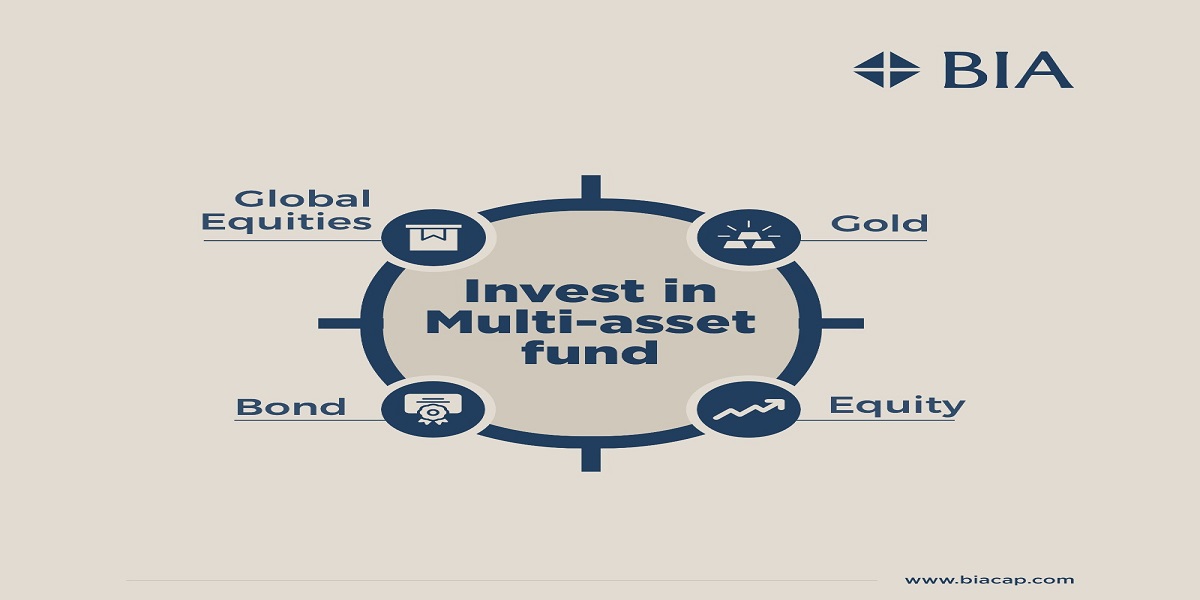“Asset Allocation, where to park your money and how to divide it up, is the single most important skill of a successful investor” – Tony Robbins.
Have you heard this? Probably yes, but few people apply this when it comes to application. Mutual fund as a financial product offers diversification functionality to you. There are various categories in it, and one of them is the “hybrid” category.
Multi-asset allocation scheme falls under the hybrid category which offers you the diversification benefit in different asset classes. Today, let’s understand about multi-asset allocation funds and its effectiveness as an asset allocation product.
Key takeaways
- What is a multi-asset allocation fund?
- How does a Multi Asset Allocation fund help you in diversification?
- Are Multi-Asset Funds Better than Pure Hybrid Funds?
- The right time to invest in Multi Asset Allocation Funds.
- Tax efficient Multi Asset Funds.
What is Multi Asset Allocation Fund?
A Multi-Asset Allocation Mutual Fund scheme invests in various asset classes as investments and aims to build a portfolio of assets.
Multi-asset allocation funds must comply with SEBI classification to invest in at least three asset classes, with a minimum allocation of at least 10% in each asset class. Equity, fixed income, Global Equities, commodities like gold, silver, REIT etc. are the various asset classes where the fund invests.
The goal is to use the negative correlation of asset classes to produce consistent and better returns.
How does a Multi Asset Allocation fund help you in diversification?
Different asset classes tend to have varying degrees of correlation, or relationship, between their returns. Some asset classes may have positive correlations, meaning that their returns tend to move in the same direction. Other asset classes may have negative or low correlations, meaning that their returns tend to move in opposite or unrelated directions.
Multi-asset funds aim to combine asset classes with low correlations in order to reduce the overall risk of the portfolio. By investing in a mix of assets with varying correlations, multi-asset funds can potentially achieve a more stable return profile than investing in a single asset class.
For example, stocks and bonds tend to have a negative correlation, meaning that when stocks are performing poorly, bonds may perform relatively better. By including both stocks and bonds in a multi-asset fund, the negative correlation between these assets can help to offset the overall risk of the portfolio.
Commodities, such as gold or oil, tend to have low or negative correlations with traditional asset classes such as stocks and bonds. By including commodities in a multi-asset fund, investors can potentially benefit from diversification and reduce the overall risk of the portfolio.
The correlation between assets returns can vary over time, and may be influenced by economic, geopolitical, or other factors. Therefore, multi-asset funds need to be managed actively in order to ensure that the asset allocation is optimized to reflect changing market conditions and correlations between assets.
Multi-asset funds may also use sophisticated risk management techniques, such as hedging or derivatives, to further manage the correlation of assets returns and minimize the risk of the portfolio.
Are Multi-asset Funds better than pure hybrid funds?
Whether multi-asset funds or pure hybrid funds are better depends on an individual investor’s goals and risk tolerance. Both types of funds have their advantages and disadvantages, and the choice between them should be made based on a careful assessment of an investor’s needs.
Multi-asset funds invest in a mix of different asset classes, such as equities, fixed income, and commodities, in order to diversify risk and potentially enhance returns. The asset allocation in multi-asset funds is typically managed dynamically, meaning that the fund manager adjusts the allocation based on market conditions and other factors. This can help to reduce downside risk during market downturns, while still allowing for participation in market upswings.
Pure hybrid funds offer a simpler investment strategy by combining only two asset classes, typically stocks and bonds. Pure hybrid funds may be a good option for investors who want to avoid exposure to more volatile asset classes, such as commodities or alternative investments.
In general, multi-asset funds may offer greater diversification and potentially higher returns over the long term, but may also be subject to greater volatility in the short term. Pure hybrid funds may offer more stability and predictable returns, but may also have lower returns over the long term.
Ultimately, the decision between multi-asset funds and pure hybrid funds should be based on an individual investor’s investment objectives, risk tolerance, and time horizon.
Want to know more on hybrid funds.. read about Balanced Advantage funds
Why is it the right time to invest in Multi Asset Allocation Fund?
Because of the cyclical nature of global markets and economic cycles as well as the prevailing concerns about recession, it is challenging to reliably predict the winning asset class.
Furthermore, these asset classes might go through a prolonged cycle of superior performance and poor performance.
Moreover, Investment cycles are fundamentally based on the fact that no one asset class can outperform in all market situations. Investors, however, frequently appear to overlook this and base their choices on feelings. The use of multi-asset allocation funds can help you maintain your investing discipline and provide you with a more stable and controlled investing environment.
There are many degrees of correlation between different asset types. Investors may be able to attain the best degree of risk-adjusted return with the aid of a suitable combination of various asset types.

(Source Bloomberg, Yes Securities, Whiteoak MF)

(Source Bloomberg, Yes Securities, Whiteoak MF)
Taxation Policy: – The taxation of these funds varies since multi-asset allocation funds are not required to keep more than 65% of their assets in debt or equity.
“Equity taxation” is applied to mutual funds that invest at least 65% of their assets in domestic stocks. Capital gains for “equity-oriented” funds with holding periods of up to a year are considered short-term gains and are taxed at a rate of 15%, plus cess and surcharge. Long-term gains are defined as capital gains withholding periods longer than a year, and they are taxed at a 10% rate on gains over Rs 1 lakh annually.
Else debt taxation is applicable which considers a short-term horizon of up to 3 years; taxable according to the applicable tax slab. Whereas gains of more than 3 years are treated as long-term gains and taxable at 20% with indexation benefit.
Tax efficient (equity oriented) Multi Asset Allocation funds
| Scheme Name | Launch date | AUM (Crore) | Returns (%) 1 year | Returns (%) 3 years | Returns (%) 5 years | Returns (%) 10 years | Since Launch Ret (%) |
| ICICI Pru Multi Asset Fund Gr | 31-10-2002 | 17044.4 | 12.73 | 27.37 | 13.8 | 15.76 | 20.93 |
| Tata Multi Asset Opportunities Reg Gr | 04-03-2020 | 1500.7 | 7.54 | 19.01 | – | – | 19.12 |
| HDFC Multi Asset Fund Gr | 05-08-2005 | 1690.05 | 9.04 | 18.74 | 10.3 | 10.33 | 9.66 |
| Axis Multi Asset Allocation Fund Reg Gr | 01-08-2010 | 1444.96 | 0.15 | 14.67 | 9.34 | 9.15 | 8.84 |
| UTI Multi Asset Fund Reg Gr | 19-11-2008 | 870.693 | 11.05 | 13.96 | 7.19 | 8.11 | 11.42 |
| Nippon India Multi Asset Fund Reg Gr | 05-08-2020 | 1155.17 | 7.58 | – | – | – | 13.49 |
| Baroda BNP Paribas Multi Asset Fund Reg Gr | 19-12-2022 | 1327.04 | – | – | – | – | 1.99 |
| ABSL Multi Asset Allocation Fund Reg Gr | 31-01-2023 | 1673.36 | – | – | – | – | 2.61 |
| Category Average | – | 7.49 | 20.48 | 11.76 | 11.13 | 10.04 |
Should you Invest ?
While the basic concept of asset allocation may be simple, implementing an effective strategy may require a significant amount of knowledge and expertise
Investing in asset allocation fund is a good option for investors who want a diversified portfolio, professional management, and convenience. It is also important to note that Multi-asset funds do offer greater diversification and potentially higher returns over the long term, but may also be subject to greater volatility in the short term.




